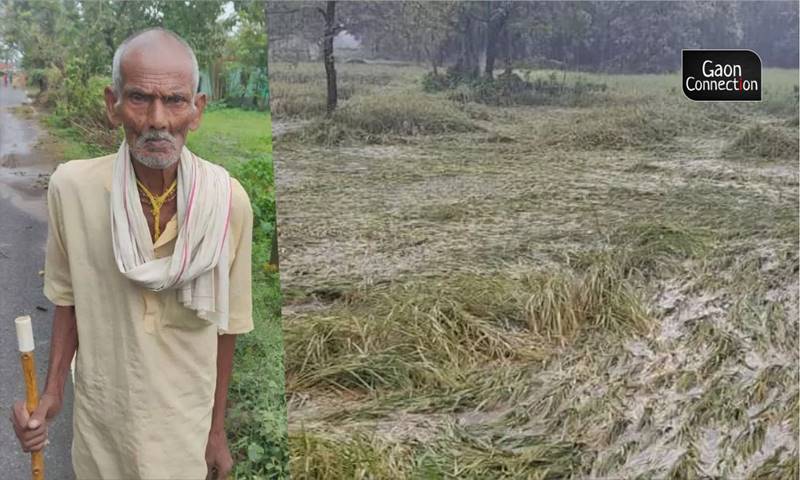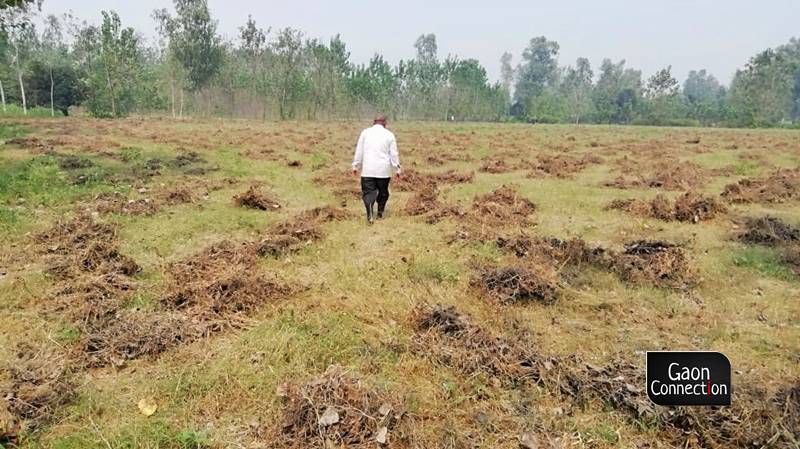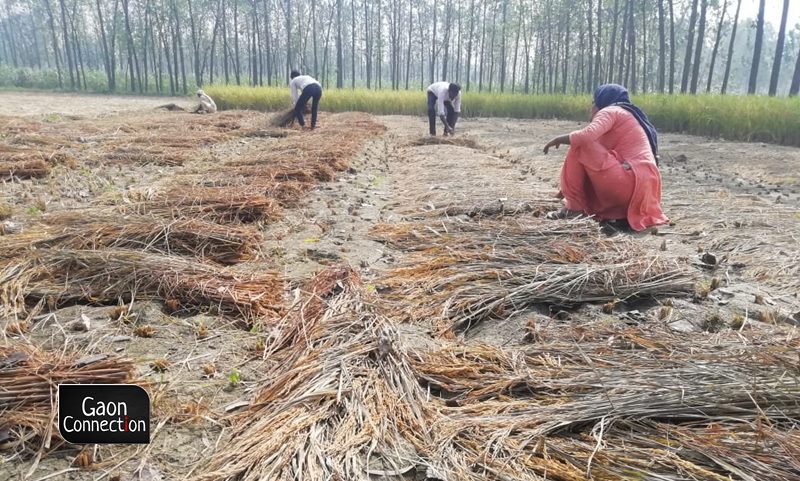Two days of rain wash away months of hard work of farmers in Bihar
Unexpected rainfall between October 18 and 20 destroyed hundreds of hectares of standing crops in Bihar, leaving farmers distraught, especially those who cultivated on leased land may not be compensated for their losses.


Surendra Mandal
Till the evening of October 19, Surendra Mandal was confident that his paddy, ready to be harvested, would earn him handsome profits.
Little did Surendra who is from Veena panchayat in Supaul district, Bihar, know what was in store. Around 6 pm that evening, it began to rain and it did not stop raining till 8 am the following morning (October 20). Mandal’s standing crop on his two-bigha land was completely destroyed, his investment of Rs 14,000 washed away.
Not too far away from where Surendra had his farm was the land of Harishankar Mandal. “There was a Kojagra (Lakshmi puja) mela happening in the village on October 19. There was a light drizzle all day, but it really came down by about 7 pm and the heavy rains lasted till 11 pm that night. Then, it continued to drizzle till the following morning,” Harishankar told Gaon Connection. “We have never had rains like this in this season and my entire crop was ruined. Not just mine, but the entire village lost its paddy,” he said.

Also Read: Notes from a water researcher who became a flood victim in Bhagalpur, Bihar
Harishankar farmed on three bighas of leased land. “I have to bear the entire cost of the seeds and the fertilisers, and share the irrigation cost with the landlord. After this, I get half of the paddy. But now I will get nothing,” he said. Harishankar spent about Rs 15000 on the land. But, as he had no land papers, he doubted if he would be eligible for any compensation.
The farmers bear the entire cost of fertilisers as that way, once the paddy is harvested, they get the straw in the fields that they can use as fodder for their cattle. But, this time not just the paddy grains, even the straw is denied to them because of the rains.
700,000 hectares of paddy feared damaged
Bihar is one of the leading paddy cultivators in the country. Forty per cent of its cultivable land is devoted to paddy. Of the 79.46 lakh hectares of agricultural lands, 32 lakh hectares is under paddy cultivation.
Annually, about 800,000 tonnes of paddy is produced in the state.
While in some parts of the state the harvesting of paddy had already begun, in other parts it was to commence soon.
In a report by the Bihar government on October 18, the floods caused during the monsoons this year affected 294 blocks in 31 districts. The report also stated that 793,1000 people were affected by the floods. According to the agricultural department, 664,00 hectares under cultivation were spoiled and Rs 902.08 crores were paid to farmers as compensation by the government.

Also Read: WATCH: Why is Bihar hit by floods every year — an expert explains at Gaon Cafe
Mahishi in Saharsa district, lying close to the Kosi barrage, is annually affected by flood waters. But, this year, there were no floods and nearly 500 hectares of paddy were cultivated. “The paddy fields flourished this year. We thought we would make up for the losses of the previous years by this year’s harvest,” Ramchandra Kumhar from Mahishi North panchayat, told Gaon Connection. “But the untimely rains washed away our hopes,” 73-year-old Kumhar said. “The stalks of paddy were laid low in the rains and there was water flowing everywhere. The grains are obviously damaged beyond repair, and I don’t think farmers will be able to even recover their input costs,” Kumhar added.
The farmers of Kushhar panchayat in Supaul district cultivate paddy and jute, but the two-day rains ruined both the crops.
Standing paddy fell over, those that were ready to be harvested could not be harvested and harvested hute that had been left to dry on acres of land were swept away.
Also Read: Bihar Floods 2021: A month on, flood and fury continue to lash Bihar
Vegetables washed away too
With the hope of a good crop, Deep Narayan Yadav and Prem Lal Yadav from Triveniganj Block in Supaul, had borrowed Rs 2 lakh from the bank. They wanted to cultivate sugarcane and vegetables. “But our sugarcane crop is almost entirely damaged. The potatoes we had sowed will certainly rot now, and the brinjal, ash gourd and pumpkins have all been damaged in the strong winds and rain,” Prem Lal told Gaon Connection. He said he did not know how he would repay the bank loan.

Compensation from the government is their only hope
“All we have left with us is the hope that the government will extend support to us in these times,” Sukhdeo Mahato from Kishanpur Block in Supaul district, told Gaon Connection. “If we get no assistance, we will die,” he said.
According to data from the disaster management department, between 2010 and 2019, because of floods, crops worth Rs 2165.7 crore were destroyed. This year, alone the loss has been of Rs 998 crores (excluding damages incurred this month).
No data is available as of now on the extent of damage of crops due to the rains between October 17 and 20, this month.
But, according to data from Gramyasheel, a non profit that works for farmer welfare, in Supaul, the damage has been extensive. “ Crops on nearly thirty to thirty five thousand hectares of land out of the eighty six thousand hectares of land under cultivation, are feared destroyed,”Chandrashekhar Jha, founder of the non-profit, told Gaon Connection.

“All block officers and agricultural co ordinators have been directed to assess the damage. Once the survey on the eighty six thousand hectares of land is complete the report will be sent to the authorities for action,” Sameer Kumar, district agriculture officer, told Gaon Connection.
It was in October 2016 that 72.8 mm of rains were recorded in 24 hours in Supaul district. On October 19, 2021, the district recorded 50 mm of rains in 24 hours.
“The cyclonic trough formed in the Bay of Bengal travelled from Odisha through Bihar and that is the reason for the excessive rainfall,” Ashok Pandit, weather scientist from the agricultural research centre, Bhagwanpur, Supaul district, told Gaon Connection.
Read the story in Hindi

